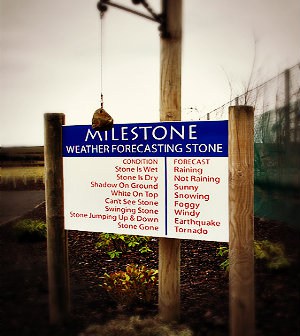Archives
28 “Old Timer” Ways To Predict The Weather

Before we had the Fancy Doppler Radar and various other techonolgical advancements in weather forecasting, we had the “Old Timers.” These were people who could look at the sky, smell the wind, and feel when nasty weather was on its way. If you try to plan your day based on the morning weather forecast, you (in my case at least) more often than not end up ill prepared. In a SHTF Scenario, you will need to know how to tell when a storm is on the way so that you can hunker down and get safe, to avoid being left out in the cold.
Check out these 28 “Old Timer” methods for figuring out the weather.
Some of these may surprise you:
There are many methods for reading the sky, the animals, and our own bodies to help predict the weather and today you are going to learn all about them. Here’s some ways that you can predict the weather forecast.
Cloud Predictions:
- Cumulonimbus clouds (traditional thunderstorm looking clouds) early in the day and developing throughout the day can mean greater chances of severe weather.
- Mammatus cloud (the puffy, pocket looking clouds) can form with both severe and non-severe thunderstorms as well as other cloud types.
- Cirrus clouds (the stringy fluffy ones), high in the sky like long streamers, mean bad weather within the next 36 hours
- Altocumulus clouds, (look like fish scales), also “mean” bad weather within the next 36 hours. The sailor’s saying is “Mares tails and mackerel scales, tall ships carry short sails.” Rain is sure to follow the next day.
The Sky:
- If you see a red sky during sunset (when you’re looking to the west), there is a high pressure system with dry air that is stirring dust particles in the air. Means dry air is moving towards you (no rain ahead but wind is sure to follow).
Smell:
- If you take a deep breath and smell earth and compost, moisture is coming soon.
- If you flowers smell stronger than normal, rain is on it’s way.
These are just a few of the way’s you can predict the weather. View Merissa’s original article to see the rest.
Click here to get the full list.
Which ways of predicting the weather have you found to be the most accurate?
Weather Forecasting the Old Fashioned Way
Predicting the Weather
Severe Weather Safety
-

 Do It Yourself7 months ago
Do It Yourself7 months agoParacord Projects | 36 Cool Paracord Ideas For Your Paracord Survival Projects
-

 Do It Yourself9 months ago
Do It Yourself9 months agoHow To Make Paracord Survival Bracelets | DIY Survival Prepping
-

 Do It Yourself9 months ago
Do It Yourself9 months ago21 Home Remedies For Toothache Pain Relief
-

 Do It Yourself10 months ago
Do It Yourself10 months agoSurvival DIY: How To Melt Aluminum Cans For Casting
-

 Exports8 months ago
Exports8 months agoAre Switchblades Legal? Knife Laws By State



Mark Smith
September 27, 2013 at 2:41 PM
Check the spider webs in the morning. Spiders treat their webs to survive the rain so if there is no dew but there was a dew fall, it will rain. Dew on the web means dry day.
Aaron
September 28, 2013 at 5:43 AM
Speaking of checking the sky, here’s one my grandpa taught me – “Red sky of night, sailor’s delight. Red sky of morning, sailor take warning.” If there’s a red sunset, as mentioned before, high pressure is moving in and it will be a pleasant day. But if there is a red sunrise, there is low pressure coming in, usually bringing rain and wind.
Aaron
September 28, 2013 at 5:47 AM
One more thing – You should be aware of the prevailing weather patterns in your area. If rain always comes from one direction, but you have it starting to come in from a different direction, it’s carrying potential for severe weather. For instance, we usually get storms from the west at home (normally coming from either the northwest or southwest.) Clouds were blowing in from the southeast – we got 3 inches of rain within an hour, hail, and multiple tornadoes across the county.
Bo
October 22, 2013 at 12:33 PM
Aaron is absolutely correct on prevailing weather. Abnormal can often be a precursor to severe. Plus if you have a pet, they will often appear skittish before some severe weather event.
Bo
survival knowledge experts
Pingback: 121 Homesteading Skills for the Modern Day Homesteader
Ramona Erdman
September 25, 2015 at 7:48 PM
If you grow persimmons cut one open if the center looks like a knife [silverware knife shape] it means ice/icy,
a spoon shape heavy wet snow for the winter and a fork means light powder snow or just light snow.
Pingback: Weather Forecasting the Old Fashioned Way – Zombie Emergency Response Group (ZERG)
Pingback: Weather Forecasting the Old Fashioned Way | SL